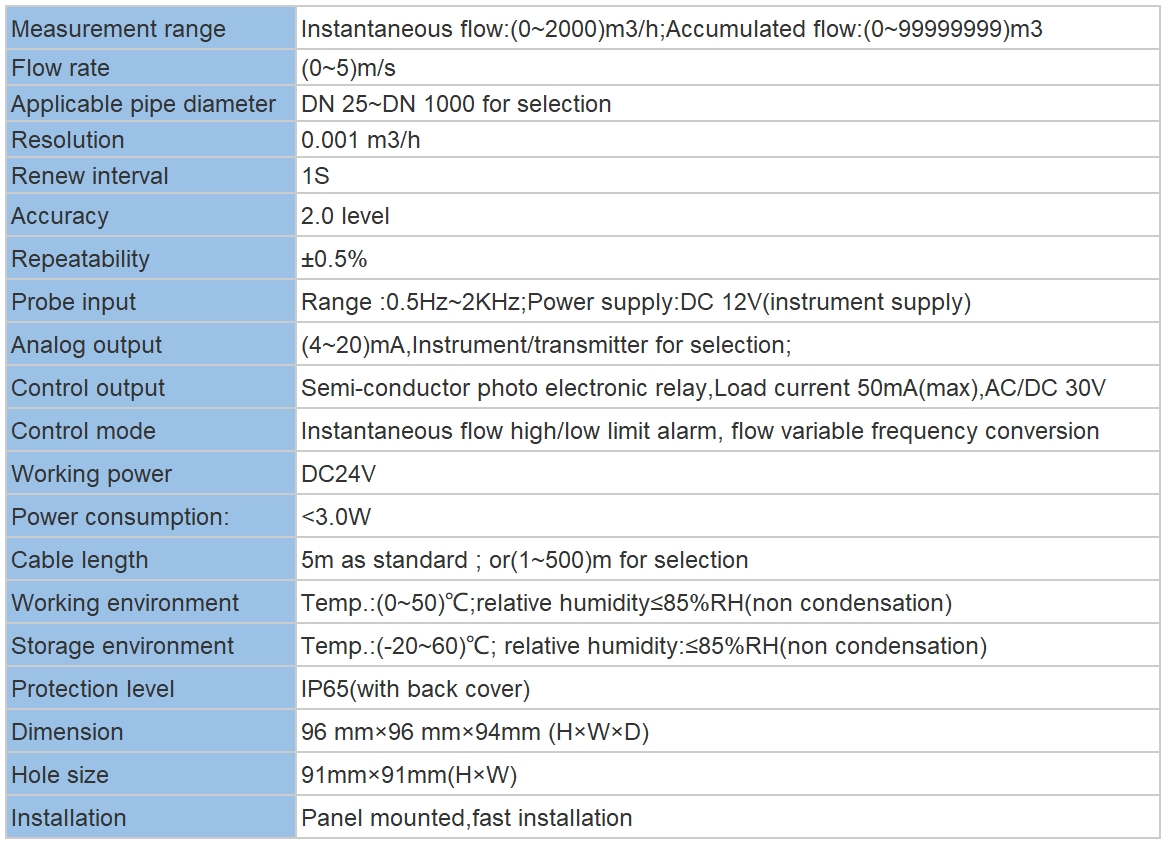Table of Contents
فوائد استخدام مقياس جودة المياه متعدد المعلمات
كيفية اختيار مقياس جودة المياه متعدد المعلمات المناسب لاحتياجاتك

CCT-5300
ثابت
10.00 سم-1
| 1.000 سم -1 | |||||
| 0.100 سم-1 | 0.010 سم-1 | الموصلية | (500\~20,000) | (1.0\~2,000) | |
| (0.5\~200) | (0.05\~18.25) | \μS/سم | \μS/سم | \μS/سم | |
| M\Ω\ m |
TDS | (250\~10,000) | (0.5\~1,000) | ||
| (0.25\~100) | \—\— | جزء في المليون | جزء في المليون | جزء في المليون | |
| درجة حرارة متوسطة | (0\~50)\℃\(درجة الحرارة. التعويض : NTC10K\) | الدقة | |||
| الموصلية: 1.5 بالمائة \(FS\) | المقاومة: 2.0 بالمائة \(FS\) | ||||
| TDS: 1.5 بالمائة \(FS\) | درجة الحرارة: 10.5℃ | ||||
| تعويض درجة الحرارة | |||||
| (0\~50)\℃\ مع 25\℃ كمعيار | |||||
| الإخراج التناظري | |||||
| جهاز إرسال/جهاز إرسال معزول (4\~20)mA\\uff0 للاختيار | التحكم في الإخراج | ||||
| مرحل SPDT، سعة الحمولة: تيار متردد 230 فولت/50 أمبير (كحد أقصى) | مصدر الطاقة | ||||
| CCT-5300E: DC24V | CCT-5320E : تيار متردد 220 فولت= 115 بالمئة | ||||
| بيئة العمل | درجة الحرارة\ (0\~50)\℃\;الرطوبة النسبية\ \≤85 في المائة رطوبة نسبية (لا يوجد تكاثف) | بيئة التخزين | |||
| درجة الحرارة.(-20\~60)\℃; الرطوبة النسبية\ ≤85 في المائة RH (لا يوجد تكثيف) | البعد | ||||
| 96 ملم\×96 ملم\×105 ملم (الارتفاع\×W\×D) | حجم الثقب | ||||
| 91 ملم \×91 ملم (ارتفاع\× عرض) | التثبيت | ||||
| \ مثبت على اللوحة، تثبيت سريع | |||||
| بالإضافة إلى المعلمات التي تحتاج إلى قياسها، من المهم أيضًا مراعاة دقة جهاز القياس وموثوقيته وسهولة استخدامه. ابحث عن جهاز قياس تمت معايرته واختبار دقته، حيث سيضمن ذلك أن تكون قياساتك موثوقة ومتسقة. ويجب أن يكون جهاز القياس سهل الاستخدام أيضًا، مع واجهة سهلة الاستخدام وعناصر تحكم بديهية. ضع في اعتبارك عوامل مثل عمر البطارية، والمتانة، وقابلية النقل، اعتمادًا على احتياجاتك الخاصة وكيف وأين ستستخدم جهاز القياس.
في الختام، يعد مقياس جودة المياه متعدد المعلمات أداة قيمة لمراقبة جودة المياه في مجموعة متنوعة من البيئات التطبيقات. من خلال قياس معلمات متعددة في وقت واحد، توفر هذه العدادات رؤية شاملة لحالة المياه، مما يسمح للمستخدمين باتخاذ قرارات مستنيرة بسرعة. عند اختيار مقياس جودة المياه متعدد المعلمات، ضع في اعتبارك عوامل مثل المعلمات التي تحتاج إلى قياسها والدقة والموثوقية وسهولة الاستخدام. من خلال اختيار المقياس المناسب لاحتياجاتك الخاصة، يمكنك التأكد من أن لديك الأدوات اللازمة لمراقبة جودة المياه وحمايتها بشكل فعال. |
\ Panel mounted, fast installation | ||||
One of the key functions of a multiparameter water quality meter is its ability to provide real-time data. This means that users can instantly see the results of their measurements, allowing them to make informed decisions quickly. Real-time data is especially important in situations where water quality can change rapidly, such as in rivers or lakes affected by pollution or other environmental factors. By having access to real-time data, users can respond promptly to any changes in water quality, helping to protect the Environment and public health.
Another important function of a multiparameter water quality meter is its ability to store and analyze data. Many meters come equipped with built-in Memory or data logging capabilities, allowing users to store measurement data for later analysis. This data can be used to track changes in water quality over time, identify trends, and make informed decisions about water management practices. Some meters also come with Software that allows users to analyze and visualize their data, making it easier to interpret and share with others.
When choosing a multiparameter water quality meter, there are several factors to consider. First and foremost, it is important to determine which parameters you need to measure. Different meters are capable of measuring different combinations of parameters, so it is essential to choose a meter that can measure the parameters that are most relevant to your specific needs. For example, if you are monitoring water quality in a freshwater lake, you may need a meter that can measure pH, dissolved oxygen, and temperature.
In addition to the parameters you need to measure, it is also important to consider the meter’s accuracy, reliability, and ease of use. Look for a meter that is calibrated and tested for accuracy, as this will ensure that your measurements are reliable and consistent. The meter should also be easy to use, with a user-friendly interface and intuitive controls. Consider factors such as battery life, durability, and portability, depending on your specific needs and how and where you will be using the meter.
In conclusion, a multiparameter water quality meter is a valuable tool for monitoring water quality in a variety of applications. By measuring multiple parameters simultaneously, these meters provide a comprehensive view of the water’s condition, allowing users to make informed decisions quickly. When choosing a multiparameter water quality meter, consider factors such as the parameters you need to measure, accuracy, reliability, and ease of use. By selecting the right meter for your specific needs, you can ensure that you have the tools necessary to monitor and protect water quality effectively.

